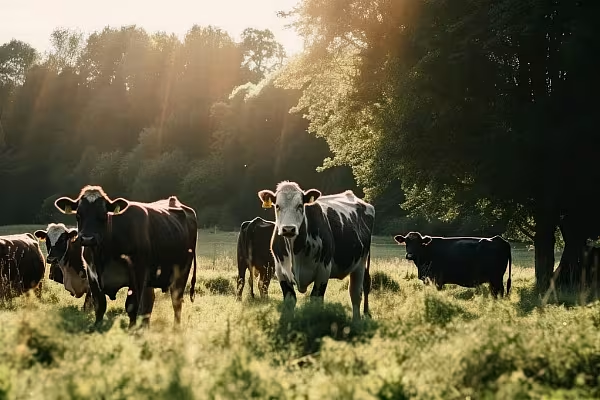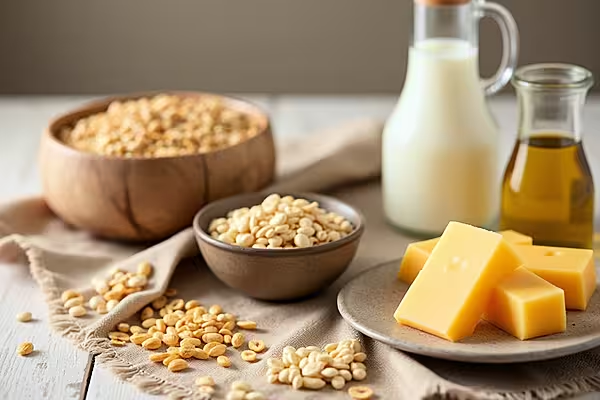Reniera O’Donnell, Food Initiative Lead at the Ellen MacArthur Foundation, highlights how farmers are joining global efforts to bring nature positive food to supermarket shelves.
Against a backdrop of rolling hills and green fields in the British countryside, thousands of dairy cows graze on lush pastures. The action of their hooves stimulates soil biology and is part of the symbiotic relationship between grazing cows and natural processes.
The family-run regenerative farms which look after these cows and land – equivalent to almost 81,000 hectares of land with 4,200 kilometres of hedgerows and 1,800 hectares of woodland – are part of First Milk.
This farmer-owned dairy co-operative, behind food brand Golden Hooves, pledges to adopt methods which are kinder to the environment and help with regenerating nature across all their farms in the UK. Products are made using milk from these farms are therefore replenishing the earth's soil upon which the cows are raised.
Regenerative farming methods include reducing or minimising soil disturbance, rotational grazing of stock, and encouraging biodiversity by moving away from monoculture crops and reducing chemical use, which have been prevalent in the industry for decades.
Huge Impact
These farmers – right through to major brands, retailers, and leading fast-moving consumer goods firms – have an incredible impact on the food we eat every single day and the food systems from which ingredients are sourced.
Our current food system is broken. It has a hugely negative impact on the natural world, generating one-third of greenhouse gas emissions and half of human-induced biodiversity loss.
But new innovations show that it doesn’t have to stay this way. It is now universally recognised that a circular economy approach offers a significant role in mitigating climate change.
Circular design for food is key. This means putting nature at the heart of decisions around ingredient sourcing and selection so we can still feed a growing population without negatively impacting our natural environment.
Redesigning food to be nature-positive can reduce greenhouse gases by 70% and halve the impact on biodiversity compared to business as usual – while increasing food production and improving profits for farmers.
The Big Food Redesign Challenge
Many key players within the food industry are beginning to take this journey. Through The Big Food Redesign Challenge, introduced by the Ellen MacArthur Foundation, participants have been tasked with designing new food products – or redesigning existing ones – using circular design principles.
Among 400 worldwide applications, 71 companies have been selected to go forward to the next stage of the challenge.
Within the Challenge, we’re offering them and other companies expert help with retail listings and championing their innovative spirit in support of scaling design choices that enable nature to thrive.
From farm to fork, redesigning our food system to be regenerative has the power to be a game-changing tool in the fight against climate change and biodiversity loss.
Retailers are invited to find out more about the food participants and how they can get involved in stocking nature-positive products by contacting challenge@bigfoodredesign.org.














